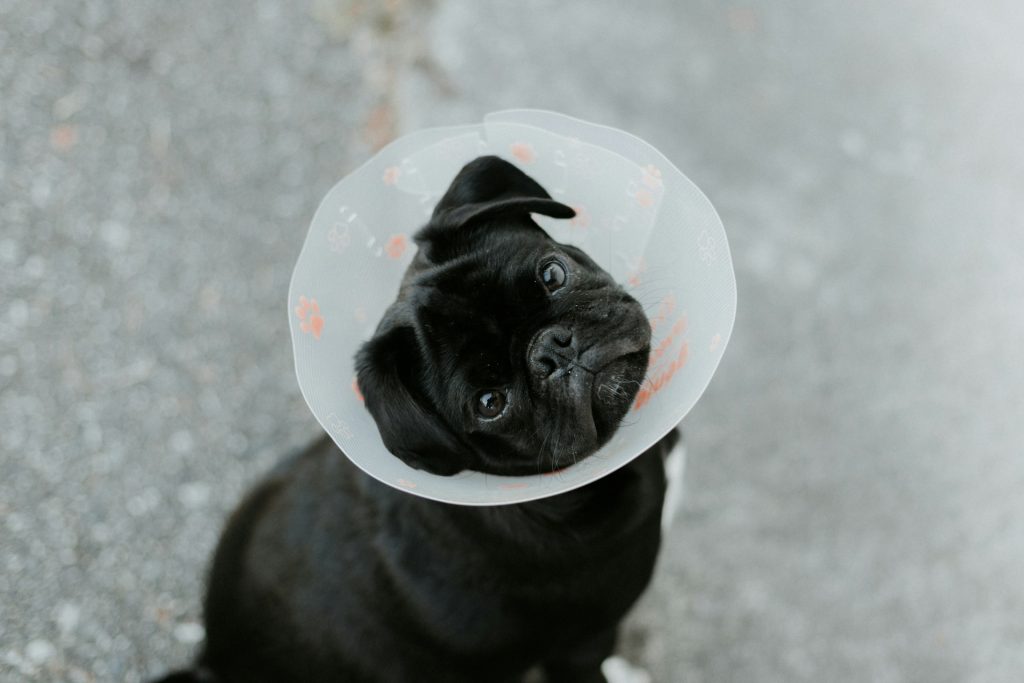
It’s a moment that can cause instant worry for any dog owner: you’re petting your best friend and suddenly feel a series of strange, raised bumps under their fur.
Your mind might race with questions and concerns. In many cases, these mysterious welts are hives on dogs, a common skin reaction that, while alarming, is typically temporary and treatable. Understanding what causes hives, how to provide comfort, and when to seek veterinary help is key.
This guide will walk you through everything you need to know about identifying, treating, and even preventing hives on your canine companion.
What Do Hives Look Like on a Dog?
One of the first questions owners have is, “what do hives look like on a dog?” The medical term for hives is urticaria, and they manifest as soft, raised, and often rounded welts on the skin.
On dogs with short hair, like Boxers or Pit Bulls, these bumps are very noticeable and can look like a rash of large mosquito bites. On dogs with long or thick fur, you may not see the bumps on the skin directly. Instead, you might notice that small patches of their coat are raised, giving the fur an uneven, bumpy texture. You can typically feel the welts underneath. Hives can appear anywhere on the body but are commonly found on the head, neck, belly, legs, and back.
While owners often search for pictures of hives on dogs for comparison, these key characteristics are the best way to identify them.
What Causes Hives on a Dog? Identifying the Triggers
Hives are nearly always a sign of an allergic reaction. This occurs when the dog’s immune system overreacts to a substance (an allergen) and releases histamines, which cause small blood vessels in the skin to leak fluid, forming the characteristic welts. Pinpointing the exact trigger can sometimes be a challenge, but the causes usually fall into a few common categories.
Insect Bites and Stings
This is one of the most frequent causes of a sudden outbreak of hives. A curious dog who gets too close to an ant hill, bee, wasp, or hornet can receive multiple stings, triggering a swift and dramatic reaction. Bites from spiders, mosquitoes, and fleas can also be culprits.
Environmental and Contact Allergens
Sometimes the trigger is something your dog touched or brushed up against. Common environmental allergens include certain plants (like poison ivy or wandering jew), grasses, pollen, mold, or even dust mites. Shampoos, topical flea-and-tick medications, or household cleaning chemicals can also cause a contact reaction that results in hives.
Food Allergies or Sensitivities
While food allergies more commonly cause chronic issues like itchy skin and ear infections, they can occasionally trigger an acute case of hives. This reaction may occur if your dog eats a new food, a new type of treat, or an ingredient they have developed a sensitivity to over time.
Medications and Vaccinations
Just like humans, some dogs can have an allergic reaction to medications, including antibiotics or pain relievers. While rare, it’s also possible for a dog to develop hives as part of a mild, temporary reaction to a recent vaccination. This is usually not serious but should be reported to your veterinarian.
Hives on a Dog: Treatment and When to See a Vet

Seeing your dog covered in itchy bumps is distressing, but the good news is that many cases can be managed easily. However, it’s crucial to know the difference between a mild reaction and a medical emergency.
At-Home Care for Mild Cases
For a mild case of hives where the dog is otherwise acting normally, the bumps often resolve on their own within 24 hours as the allergen leaves their system. You can help soothe the itchiness by applying a cool compress to the affected areas or giving them a cool bath with a veterinarian-approved oatmeal shampoo.
Many owners ask about giving their dog an over-the-counter antihistamine like Benadryl. You should never give your dog any medication without explicit instructions from your veterinarian. While vets sometimes recommend antihistamines, the dosage and safety must be determined by a professional, as the wrong amount can be ineffective or even harmful.
When to Seek Immediate Veterinary Care
While hives themselves are usually harmless, they can sometimes be the first sign of a much more severe and life-threatening allergic reaction called anaphylaxis. You must go to an emergency veterinarian immediately if you notice any of the following symptoms:
- Significant swelling of the face, muzzle, or throat
- Difficulty breathing, wheezing, or coughing
- Pale gums
- Vomiting or severe diarrhea
- Weakness, lethargy, or collapse
Anaphylactic shock in dogs is a medical emergency. Do not wait for the symptoms to improve; seek help right away.
A Proactive Approach: Prevention and Health Monitoring
After a case of hives has resolved, the focus shifts to prevention. This involves being a bit of a detective to figure out the trigger and monitoring your dog’s overall health to catch potential issues early.
Identifying and Avoiding Triggers
Think back to what was different in the 24 hours before the hives appeared. Did your dog play in a new park? Did you use a new shampoo or laundry detergent? Did they eat a new treat? By identifying the likely cause, you can take steps to avoid that allergen in the future, preventing another uncomfortable outbreak for your dog.
Monitoring Your Dog’s Well-Being with Activity Tracking
The Halo Collar 5 is built not just for safety, but for your dog’s total well-being. That’s why we’re introducing Halo Health™, a groundbreaking new feature in the Halo app. A dog’s health is often reflected in their daily routines, and even small changes in behavior can signal an issue before physical symptoms appear.
By analyzing data from the collar’s advanced internal sensors, Halo Health™ delivers accurate daily activity metrics and deeper insights into your dog’s exercise, rest, and overall wellness. This detailed view allows you to make more informed decisions about their care and gives you concrete data to share with your veterinarian.
And this is only the beginning. New features and even more powerful insights will roll out in 2026 and beyond, making Halo Health an invaluable tool to help your dog live a safer, longer, and healthier life—while giving you peace of mind knowing you can spot potential issues sooner than ever before.
Practical Guidance for Addressing Hives on Your Dog
Recognizing and managing hives on your dog is an important skill for any pet owner, especially given the wide range of potential triggers and how quickly allergic reactions can escalate. By familiarizing yourself with what hives look like, where they tend to appear, and how they differ from other skin conditions, you can make more informed decisions about when to monitor at home and when to seek veterinary care.
Keeping your dog out of high-risk environments is a crucial preventive step, and tools like the Halo Collar offer invaluable support in this regard.
With customizable smart boundaries and real-time activity tracking, Halo can help you minimize your dog’s exposure to common allergens such as certain plants, insects, or outdoor chemicals. This will make it easier to safeguard sensitive pets from repeat allergic reactions.
To further enhance your knowledge of canine health and ensure your dog’s well-being, visit our Dog Health page for more expert advice and resources.






